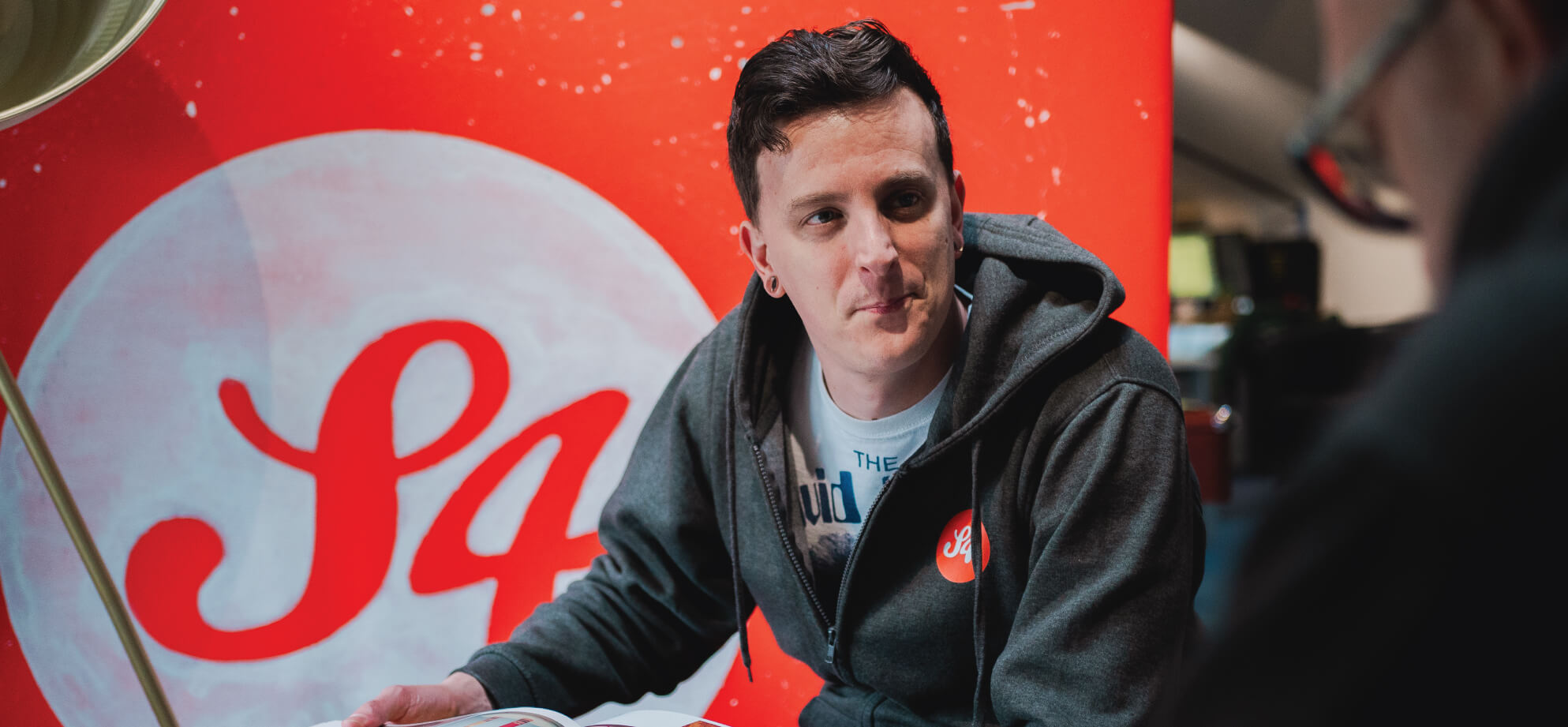The creative process is exciting, stressful and extremely rewarding. But it’s something that involves two parties – the designer and the client, and this is where the process can often come unstuck.
I’ve sat in client meetings receiving briefs that made about as much sense as a chocolate teapot, and I’ve watched brilliant creative work get butchered by feedback that would make a grown designer weep into their oat milk latte.
I’ve seen the frustration on clients’ faces when it doesn’t match what they had in their mind, or embarrassment when they are forced to give ‘feedback’ from others that they don’t agree with.
After many years of navigating these choppy waters, I’ve learned that the magic happens when both sides actually understand what they’re doing. So here’s my completely honest take on how to work with agencies and designers without everyone wanting to throw their devices out the window.
Start with the real brief (not the brief’s prettier cousin)
The best creative work comes from understanding the actual problem you’re trying to solve, not the sanitised version that’s been through three rounds of internal approval. Your designer doesn’t need corporate speak, or cut and paste jobs from previous briefs, they need the messy truth.
Instead of “We need to increase brand awareness among our target demographic,” try “Our sales team says people keep confusing us with our main competitor, and it’s costing us deals.” See the difference? One gives us something to actually work with.
That’s why you should always try and include some insight into the brief, insights often gained from talking to the people who are actually dealing with customers and prospects.
And please, for the love of all that’s holy, tell us about your constraints upfront. Budget, timeline, approval process, your CEO’s inexplicable hatred of the colour orange, we need to know.
There’s nothing worse than falling in love with an idea only to discover it’s completely impossible because of something you knew all along, but didn’t include in the briefing process.
The art of useful feedback
Here’s where things usually go sideways. You’ve seen the creative work, looked at the options, and now you need to respond. But “I don’t like it” or “make it pop more” isn’t feedback, it’s just noise!
Good feedback connects back to your objectives.
Instead of “this feels too corporate,” try “this doesn’t feel like it would connect with the startup business owners we’re trying to reach.”
Instead of “I hate this font,” explain “this feels too formal for a brand that’s supposed to be approachable.”
And, something we see time and time again, especially with business owners, is the inability to separate your personal taste from what actually works for your business. Just because you wouldn’t wear that shirt doesn’t mean your target audience won’t love it. It is unlikely that you are your target audience, so you need to put yourself in their shoes, which involves gaining some insight again.
Know when you are the problem
Sometimes, the issue isn’t the creative work itself, but rather the process.
If you’re getting work back that consistently misses the mark, look at what you’re putting in. Are your briefs clear? Are you giving feedback that actually helps? Are you involving too many people in the decision-making?
I’ve seen projects derail because someone decided to “just quickly run it past” their partner, the accountant, and their neighbour’s dog. More opinions don’t equal better work; they usually just equal more confusion and dilution of the idea.
Trust the process (but stay involved)
You hired professionals for a reason, so let them do their thing. But that doesn’t mean disappearing until the final presentation. The best client relationships involve regular check-ins, honest conversations, and course corrections along the way.
If something’s not working, speak up early. Don’t smile and nod through three rounds of revisions and then blow everything up at the end. We’re not mind readers, and we definitely can’t fix problems we don’t know exist.
The relationship reality check
To get the best out of any supplier/client situation, you need to realise that it is a relationship, not a transaction. The agencies and designers who consistently deliver great work are the ones who actually understand your business, your challenges, and your goals.
That means investing time in the relationship beyond just project deadlines. Share your wins, your failures, your industry gossip. The more we understand your world, the better we can create work that has the best impact.
When things go wrong
Even with the best briefs and feedback, sometimes projects just don’t land. Maybe the market shifted, maybe new information came to light, maybe it was a full moon, whatever.
The key is handling these moments like adults. Don’t ghost your agency or designer because one project didn’t work out. Have an uncomfortable conversation.
Figure out what went wrong and how to avoid it next time. Some of our best client relationships were forged in the aftermath of projects that initially crashed and burned.
The joy of getting the creative relationship right
Working with creative people doesn’t have to feel like navigating a maze blindfolded. Be clear about what you need, honest about what’s not working, and realistic about what’s possible. Treat your agency or designer like a partner, not a vendor.
That’s when you’re going to hit the sweet spot and get the very best out of your designer and agency.
And remember, we’re all just trying to create something that works. The drama, the ego battles, the mysterious feedback, none of that actually helps. What helps is two groups of smart people working together to solve a problem.
Now go forth and brief responsibly! Your designer’s sanity depends on it.
Ready to work with a creative team that actually gets it? Drop us a line at Sourcefour, we promise to ask the uncomfortable questions upfront so everyone can sleep better at night


